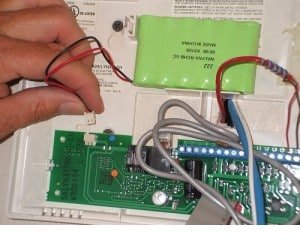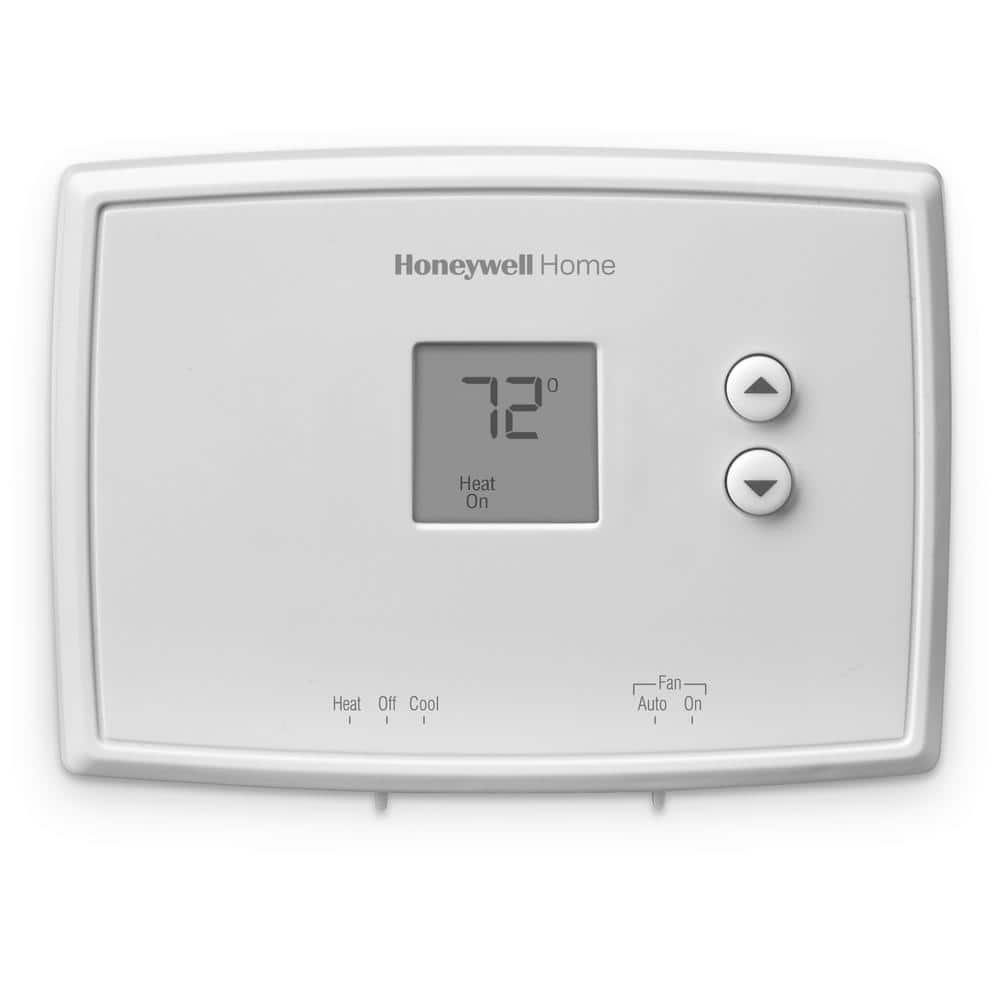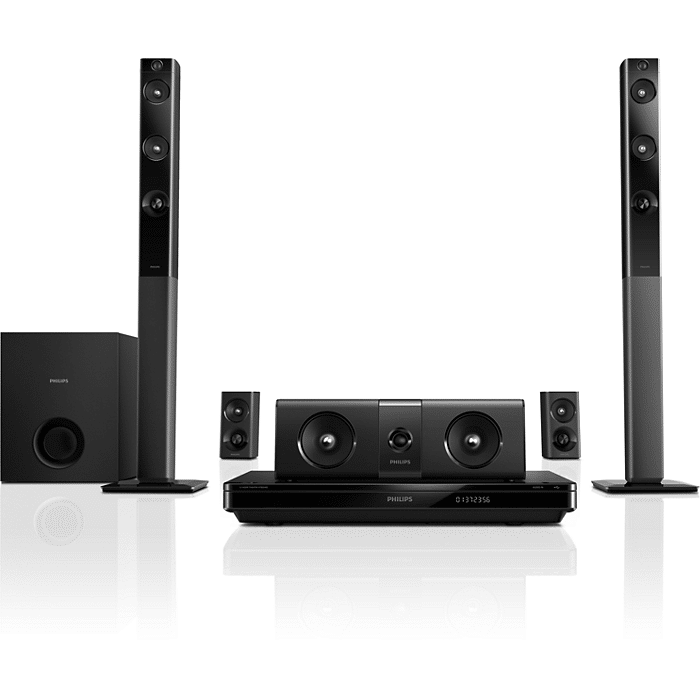Not everything you use for home security is physical. Some measures go beyond locks and alarms.
Understanding what isn’t a physical security measure can be crucial for your safety strategy. Today, security solutions are evolving rapidly. Homeowners often focus on physical barriers like doors, windows, and cameras. Yet, these are just one piece of the puzzle.
Mental and digital approaches also play significant roles. Knowledge about digital security can protect personal information and privacy. Awareness and vigilance can enhance safety without physical tools. Recognizing these elements helps create a comprehensive security plan. This insight ensures a balanced approach, combining physical and non-physical methods. Embrace the full spectrum of security for peace of mind.
Introduction To Physical Security
When you think about keeping your home safe, physical security is often the first line of defense that comes to mind. It’s the tangible barriers that protect your space from intruders. But not every security measure you employ is physical. Imagine this: you install a top-notch alarm system. While effective, it doesn’t physically block entry. Understanding what constitutes physical security is crucial in forming a robust security strategy for your home.
Purpose Of Physical Security
The main goal of physical security is simple: prevent unauthorized access. You want to protect your loved ones and valuable belongings from theft or harm. Think about how strong locks on your doors or sturdy fences around your property deter potential intruders. Physical security acts as a visible deterrent, sending a clear message that your home is not an easy target. It’s about making your space feel impenetrable.
Common Physical Security Measures
What are some of the physical security measures you can add to your home? Locks are a good starting point. Ensure all doors and windows have reliable locks. Reinforce these entry points with deadbolts for added strength.
Consider installing security cameras. They not only provide surveillance but also act as a deterrent. Knowing they’re being watched can discourage potential intruders.
Don’t forget about lighting. Motion-activated lights can scare away intruders before they even reach your door. The brighter your home, the harder it is for anyone to approach unnoticed.
Also, think about landscaping. Trim hedges and trees that could provide cover for someone trying to break in. Keep your yard open and visible to neighbors, increasing the chances of spotting suspicious activity.
Does your home have any unique vulnerabilities? Address these with customized solutions. Maybe a fence needs reinforcement or a window is particularly easy to access. Tailor your security measures to your home’s specific needs.
Remember, while alarms and smart tech are vital, they don’t physically block entry. They complement physical security measures, enhancing your overall strategy. Are there areas in your home security plan you can strengthen? Evaluate what’s already in place and consider how physical measures can make it even stronger.
Misconceptions About Security Measures
Many believe all security measures are physical. This is a common misconception. Understanding what is not a physical security measure can protect your home better. People often confuse non-physical measures with physical ones. This leads to gaps in home security. Such gaps can make homes vulnerable to threats.
What People Often Mistake
Some think surveillance cameras are purely physical. In reality, they rely on digital technology. Digital locks also cause confusion. They seem physical but work on software. People often think that having a guard dog is enough. Dogs can deter thieves but aren’t foolproof.
Impact Of Misunderstandings
Misunderstandings can lead to security risks. Homeowners may neglect digital security. They focus on physical measures like locks and bars. Neglecting digital aspects makes homes vulnerable. Thieves can bypass weak digital systems easily. This leaves homes open to intruders. Awareness of what counts as non-physical is crucial.
Defining Non-physical Security Measures
Non-physical security measures for your home include digital safeguards like firewalls and antivirus software. These protect against cyber threats. Unlike locks or alarms, they defend your online privacy and data.
When thinking about home security, many people immediately picture physical barriers—locks, cameras, or fences. However, security extends beyond the physical realm. It’s crucial to understand what non-physical security measures entail and how they can protect your home.Digital And Cybersecurity
In our digital age, safeguarding your home’s network is just as important as securing its doors and windows. Imagine returning from a vacation only to find that your smart devices have been hacked. This could lead to compromised personal information or unauthorized access to your home. Protect your Wi-Fi with a strong, unique password. Regularly update your router’s firmware to patch vulnerabilities. Disable remote access unless absolutely necessary. These steps can prevent unwanted visitors from accessing your digital space.Policies And Procedures
Security isn’t just about technology—it’s also about the rules and guidelines you set for your household. Do you have a policy for handling unexpected visitors or package deliveries? Clear procedures can help you and your family react swiftly in unusual situations. Consider establishing a protocol for sharing information. Who has access to your home’s security system or digital devices? Limiting this can minimize risks. Discuss these policies with everyone in the household to ensure compliance. What measures have you put in place to enhance your home’s security? Remember, a combination of both physical and non-physical strategies can offer the best protection. Balancing these aspects ensures a comprehensive approach to safeguarding your sanctuary.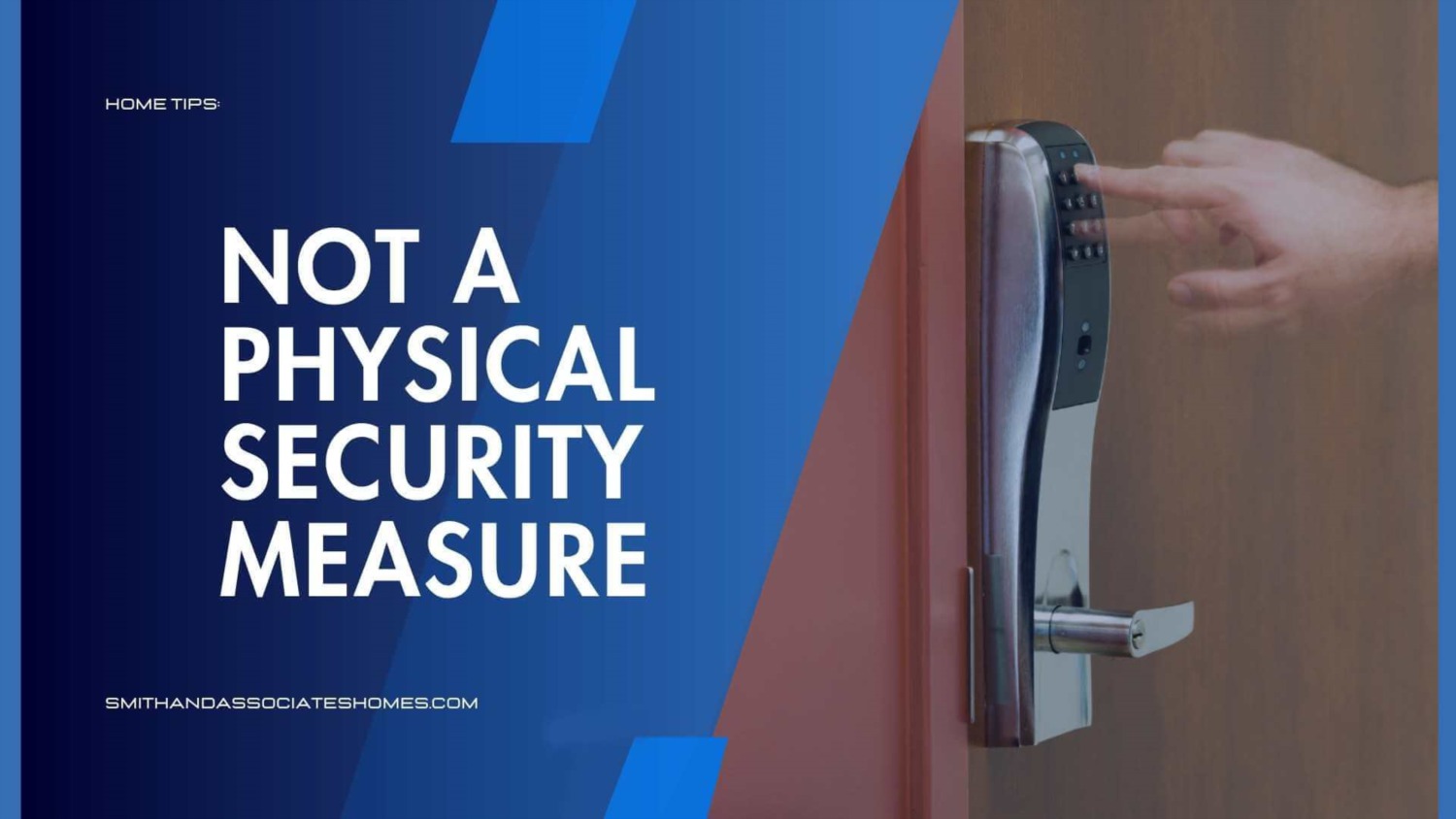
Credit: www.smithandassociateshomes.com
The Role Of Human Factors
Physical security measures often come to mind for home protection. Think locks, alarms, and cameras. Yet, human factors play a crucial role in security. They might not seem tangible, but they are vital. Human factors influence how we implement and maintain security systems. People are at the heart of security. Understanding their role can greatly enhance your home safety.
Employee Training And Awareness
Training shapes how employees handle security tasks. Proper training ensures they follow security protocols. Awareness programs keep security top of mind. They remind employees of their roles in safeguarding homes. Regular updates on security trends are helpful. Knowledge about threats increases vigilance. Effective training reduces the risk of security breaches.
Human Error And Security
Human error is an unavoidable security risk. Mistakes can compromise security measures. Forgetting to lock doors or set alarms is common. These errors make homes vulnerable. Understanding human error helps in creating better security systems. Design systems that minimize mistakes. Simple reminders can prevent costly errors. Acknowledging human error can lead to more secure homes.
Technology And Security
Technology has transformed the way we approach home security. With advancements in digital tools, safeguarding your home has become more convenient. Yet, not all security measures are physical. Understanding the role of technology in security is crucial.
Virtual Security Tools
Virtual security tools are non-physical measures. They include software, apps, and online services. These tools monitor and alert you of any threats. Mobile apps allow remote surveillance of your property. Cloud storage services save security footage for future reference. Virtual assistants can control smart locks and lights. These tools enhance security but lack physical presence.
Limitations Of Technology
Technology has its limitations. It can’t physically deter intruders. A digital lock can be hacked or malfunction. Power outages can disable electronic systems. Internet disruptions can halt virtual monitoring. Technology depends on reliable power and network connections. Always have a backup plan for security.

Credit: echelonprotectiveservices.com
Environmental Influences On Security
When you think about securing your home, the first things that come to mind are probably alarms, locks, and cameras. But have you considered how the environment affects your home’s security? Environmental influences can play a significant role in either strengthening or weakening your security measures. Understanding these influences is crucial to ensure your home remains safe and sound.
Geographical And Structural Considerations
Your home’s location affects its security more than you might think. Living in a quiet rural area might give you peace, but it could also mean slower emergency response times. On the other hand, urban areas might see quicker responses but face higher crime rates.
Consider the structure of your home as well. A house on a hill might offer beautiful views but could be more vulnerable to landslides or have limited access for emergency services. Is your home near a public path or secluded away? Each scenario requires different security solutions.
Be aware of these geographical and structural factors. They aren’t physical security measures, but they heavily influence your security needs.
Natural Disasters And Security
Natural disasters can disrupt even the most robust security systems. Think about how a power outage from a storm can render electronic security systems useless. You might have the best security technology, but without electricity, it becomes a paperweight.
Consider investing in backup power options, like generators, to keep your security systems operational. Also, secure your home against physical damage with storm shutters or reinforced doors. These measures can prevent opportunistic break-ins when natural disasters strike.
Does your area frequently experience earthquakes, floods, or hurricanes? Each type of disaster comes with its own set of security challenges. Preparing for these events can mean the difference between vulnerability and safety.
By understanding these environmental influences on security, you can make informed decisions to protect your home. Have you thought about how your environment affects your home’s security? If not, now is the time to start.
Legal And Regulatory Frameworks
When discussing home security, we often think of cameras, alarms, and locks. However, a crucial aspect that is often overlooked is the legal and regulatory frameworks that govern these security measures. These frameworks play a vital role in shaping what you can and cannot do to protect your home. Understanding them can help you avoid legal troubles and ensure your security measures are effective and compliant.
Compliance And Standards
Compliance with legal standards is essential when implementing security measures. Every region has its own laws that dictate how security devices can be used. For instance, placing cameras in areas where people expect privacy might breach privacy laws.
To prevent issues, familiarize yourself with local regulations. This ensures your security measures are not only effective but also lawful. You can consult local authorities or legal experts to help navigate these complexities.
Legal Implications Of Security Measures
Security measures are meant to protect, but they can also have legal repercussions if not handled properly. Installing high fences or aggressive deterrents might seem like a good idea, but they could lead to disputes with neighbors or even legal action.
Consider how your security choices affect others. Could your measures be seen as an invasion of privacy or a nuisance? Balancing protection with respect for the law and neighbors is crucial.
Think about the security measures you’ve considered for your home. Are they compliant with local laws? Understanding these frameworks could save you from costly legal battles. It’s not just about protection; it’s about responsible protection. What security measures have you implemented, and how do they align with legal standards?
Integrating Physical And Non-physical Security
Alarms and surveillance cameras are common physical security measures. Passwords, however, aren’t physical. They protect digital access. Knowing what isn’t a physical security measure helps in creating a balanced home security plan.
Integrating physical and non-physical security measures is essential for a robust home security strategy. While physical security includes locks, cameras, and alarms, non-physical measures involve digital tools and practices. Understanding how to blend these can protect your home comprehensively. ###Holistic Security Approaches
Holistic security combines both tangible and digital elements to create a secure environment. Imagine having a high-tech alarm system that alerts you via smartphone whenever there’s suspicious activity. This integration makes it easier to monitor and respond to threats quickly. Have you considered using smart locks that can be controlled remotely? They offer an added layer of security, allowing you to lock or unlock doors from anywhere. This kind of convenience empowers you to manage your home’s security without being physically present. ###Challenges In Integration
Merging physical and non-physical security can present hurdles. Different systems might not always communicate seamlessly. This can lead to gaps that undermine your security efforts. Some might find the technological aspect intimidating or confusing. Choosing the right tools that work well together is crucial. Researching products that are compatible can save you time and frustration. Security is not just about tools but also knowledge. Are you aware of how to use these systems effectively? Training yourself and your family on their usage can maximize their potential. Integrating these elements might seem daunting initially. But with the right approach, you can create a secure and convenient living space. So, what steps are you taking today to secure your home on all fronts?Future Of Security Measures
The future of security measures is evolving rapidly. As technology advances, traditional security methods are being replaced. Homeowners must understand what is not a physical security measure. This includes focusing on digital and advanced solutions. The shift towards smart security systems is undeniable.
Emerging Trends And Technologies
Security measures now include smart cameras and sensors. These devices connect to home networks. They provide real-time alerts and data analysis. Artificial Intelligence is playing a vital role. AI can predict patterns and detect unusual activities. Voice recognition systems are gaining popularity. They offer hands-free control over security features.
Integration with smart home devices is common. Lights, locks, and alarms now work together. These systems create a seamless security environment. Blockchain technology is also emerging. It ensures data privacy and secure transactions. These technological trends are shaping the future of home security.
Adapting To New Threats
Security threats are constantly changing. New risks require updated solutions. Cybersecurity is becoming part of home security strategies. Protecting your network is essential. Hackers can exploit vulnerabilities in smart devices. Regular updates and patches help safeguard against these threats.
Homeowners need to be proactive. Monitoring systems must be adaptable. This involves learning about potential risks. Understanding digital threats is key. Training family members on security protocols is important. Every member should know how to respond to alerts.
In the future, security measures will focus on adaptability. They must evolve with emerging threats. This ensures a safe and secure home environment.
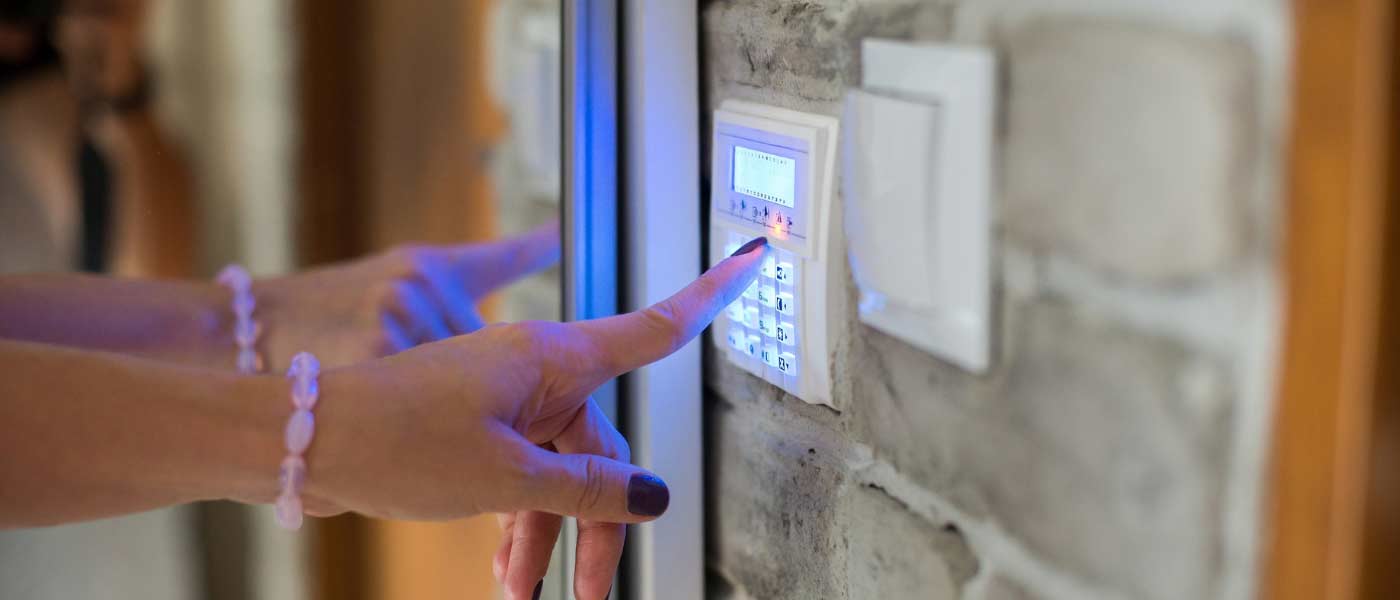
Credit: www.inthesky.com
Frequently Asked Questions
What Is Not A Physical Security Feature For Your Home?
A non-physical security feature for your home is a security alarm system. It uses sensors and alerts without physical barriers. This system enhances safety by monitoring activities and notifying you of breaches. Unlike physical features, it relies on technology rather than physical structures like locks or fences.
Which Is Not A Physical Security Control?
An example of a non-physical security control is antivirus software. It protects systems from digital threats, not physical ones.
Which Of The Following Is Not Part Of Physical Security?
Cybersecurity is not part of physical security. Physical security involves protecting tangible assets, like buildings and equipment, from threats.
What Are The 4 Physical Security Measures?
The four physical security measures are access control systems, surveillance cameras, security personnel, and perimeter barriers. Access control regulates entry. Surveillance cameras monitor activity. Security personnel ensure safety. Perimeter barriers prevent unauthorized access. Implementing these measures enhances protection against threats.
Conclusion
Understanding what isn’t a physical security measure is crucial. It helps make your home safer. Digital security tools and software can enhance safety. But they don’t replace physical barriers. Locks, doors, and alarms remain vital. Don’t rely solely on technology for home protection.
Balance is key. Use both digital and physical measures. This ensures better security for your family. Stay informed and make wise choices. Your home deserves the best protection possible. Safety matters.







